4 Dirty Little Secrets About the Sub Floor Ventilation Industry
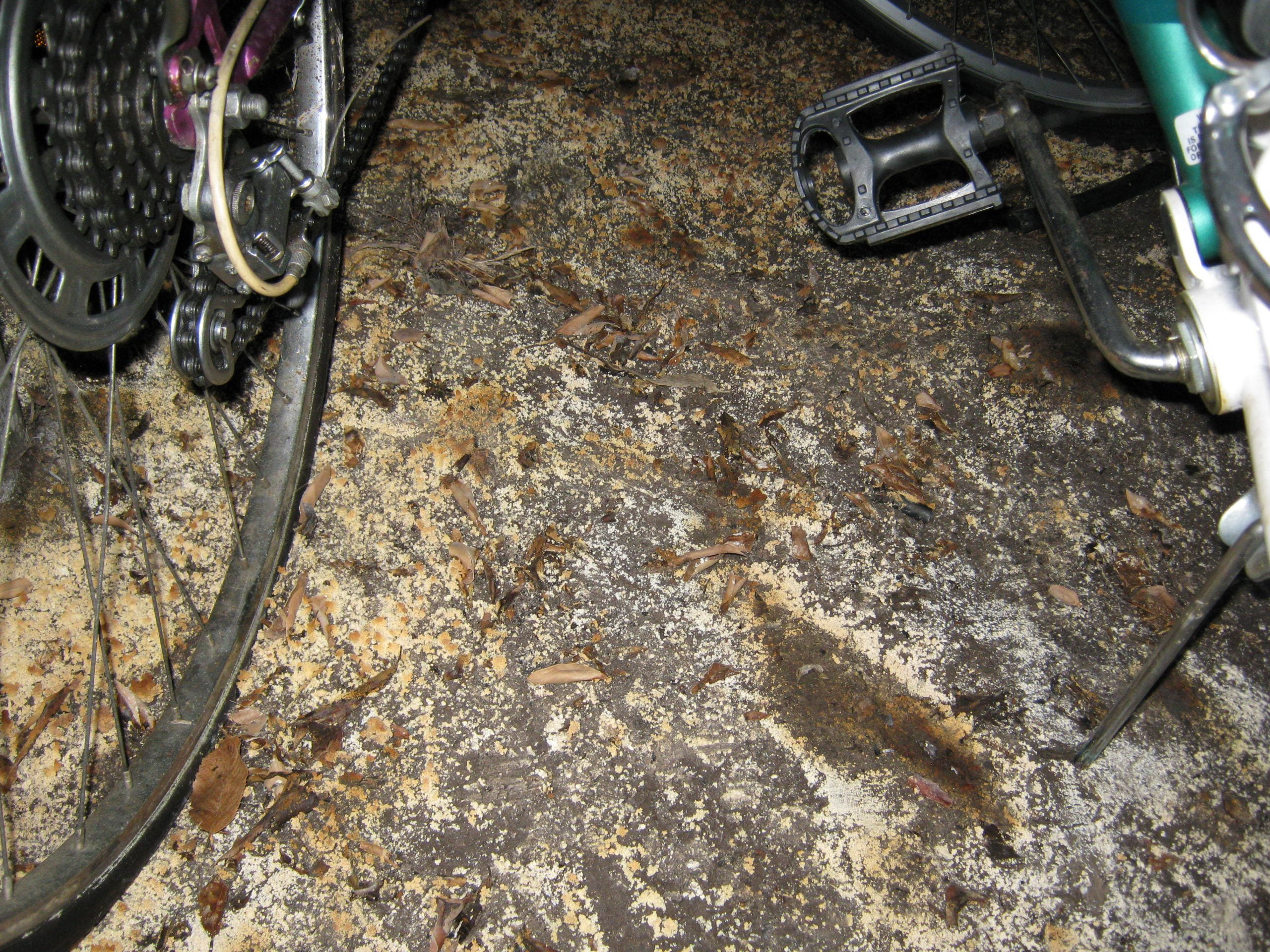
Sub floor ventilation isn’t something you typically think about when building a home. Chances are that you’re only reading this because you’ve been told you have a sub floor/under floor issue, such as:
- Musty or smelly floorboards
- Timber rot (wet or dry)
- Mould or mildew growth
- Rising damp in your home
… And that’s alright! Sub floor ventilation isn’t as exciting as your feature lighting, kitchen cabinets or upholstery choices.
But you shouldn’t ignore your sub floor space. Re-stumping your home can easily cost $5,000.00 to $10,000.00 if your sub floor space is compromised by moisture or timber rot.
We’re going to outline a few secrets (or rather, tips) you should be aware of when looking into sub floor ventilation.
1) Sub Floor Ventilation is Usually Installed as an Afterthought
If [you have a water leak] you could have a mould metropolis under [your floor], plus other unknown rot & damage. ~2 years ago a stain in the ceiling of my mudroom led to the discovery that the shower drain had been leaking, probably for a couple years, but slow enough the water spread laterally soaking the subfloor instead of directly dripping down. We had to rip out the entire shower stall, and even replace part of top plate where the second floor wall sat on top of the first. It was an epic nightmare that dragged on for longer than it should have, and we didn’t have a shower for like 6 or 8 months.
UnstoppableDrew, Reddit
In short: Your home more than likely has little to no sub floor ventilation, unless you have specifically installed some form of fan or ventilation system for that purpose.
Addressing sub floor ventilation is frequently overlooked when building a home. There are many stories of builders leaving unconnected heating ducts, leftover spools of insulation or even discarded materials beneath the house. These factors can contribute to poor sub floor ventilation, as obstructions can hinder airflow.
Typically, sub floor spaces in newly built homes will include vent outlets—though this alone will not be enough to extract moisture or stop mould growth.
Addressing mould growth requires suitable airflow, and minimal to no condensation. Using sub floor fans will circulate air constantly to extract moisture.
Many builders won’t consider fans, as active powered ventilation may incur extra running costs. However, this is crucial for all homes, especially those exposed to excessive amounts of moisture, including tropics and other high-humidity locations.
2) Ambient/Passive Ventilation Sucks
You might be told to install some vents and be done with it—but that simply isn’t enough.
Ambient ventilation works on two main principles: thermal expansion, and airflow. If you have no air moving through your sub floor, that air isn’t going to go anywhere.
If your sub floor space isn’t heating up, the air in it won’t expand. Given that sub floor spaces are already the lowest point of the house, just above constantly shaded earth, the chances that your sub floor area is naturally heated is next to nil; ambient air flow generated by heat isn’t going to happen.
So why would you bother with simply putting vents on the side of your sub floor? You might as well use your air conditioner to heat your home—sure, it CAN work, but it’s horribly inefficient at doing so.
3) One Fan Won’t Solve All Your Problems
Quite frankly, every home is different—one solution won’t apply to every home. Some homes have divided segments into their sub floor spaces, or are built on slopes that create difficult choke points for sub floor ventilation access.
It’s important to note that simply installing an extraction fan and turning it on won’t solve your problems. Sometimes you have moisture issues in certain areas of your sub floor requiring specialised airflow.
Solar Whiz sub floor ventilation offers 4 main styles of ventilation, each of which is suited to different needs.
Bi/Trifurcation
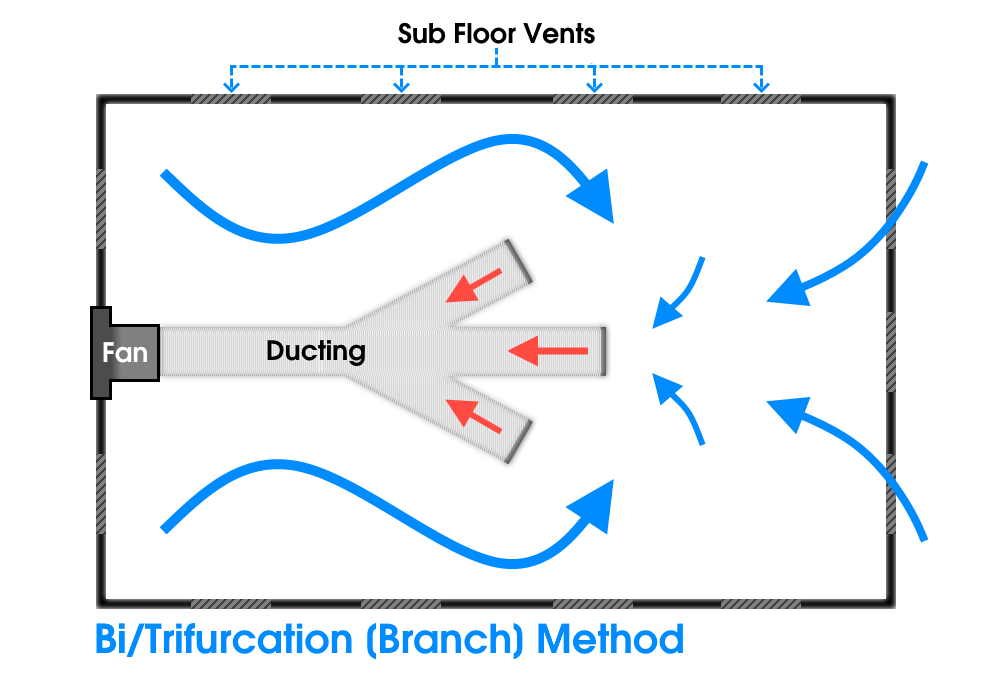
This style of sub floor ventilation is best suited towards extracting large volumes of air across a large space. This allows ducting to be placed around difficult partitions, or simply to draw air from the spaces that are most susceptible to moisture.
Push/Pull Method
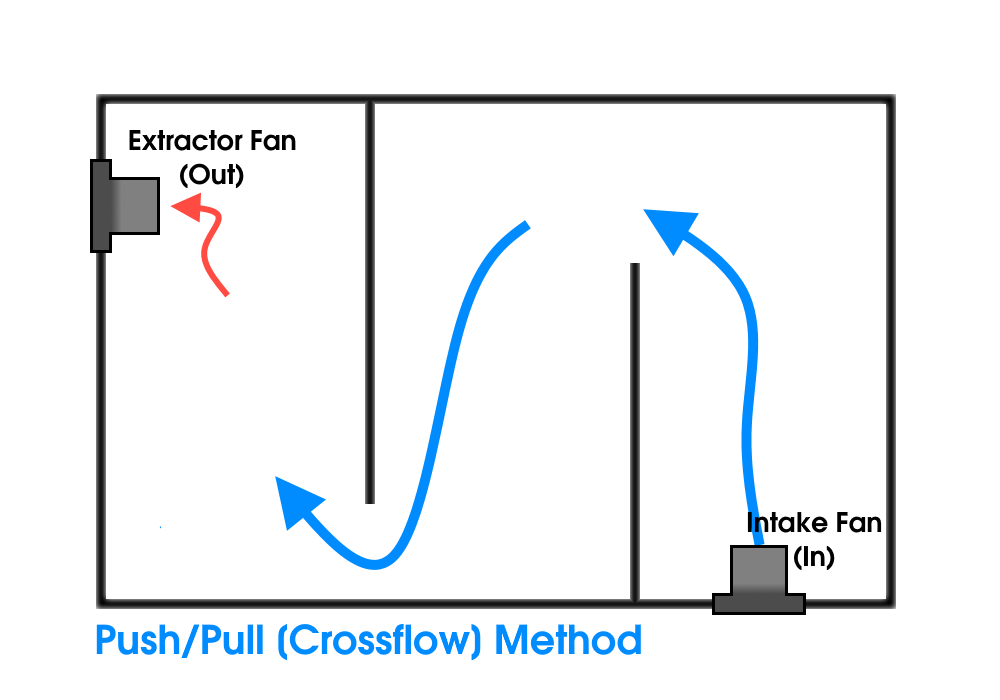
Perhaps one of our most common styles of installation; the ‘Push/Pull Method’ relies on a single air intake, and a fan to extract air from your sub floor space. It can also be achieved with an intake fan as well as an extraction fan working together. This channels air & moisture through your entire sub floor, ensuring optimal extraction.
Roof Mounted Extraction
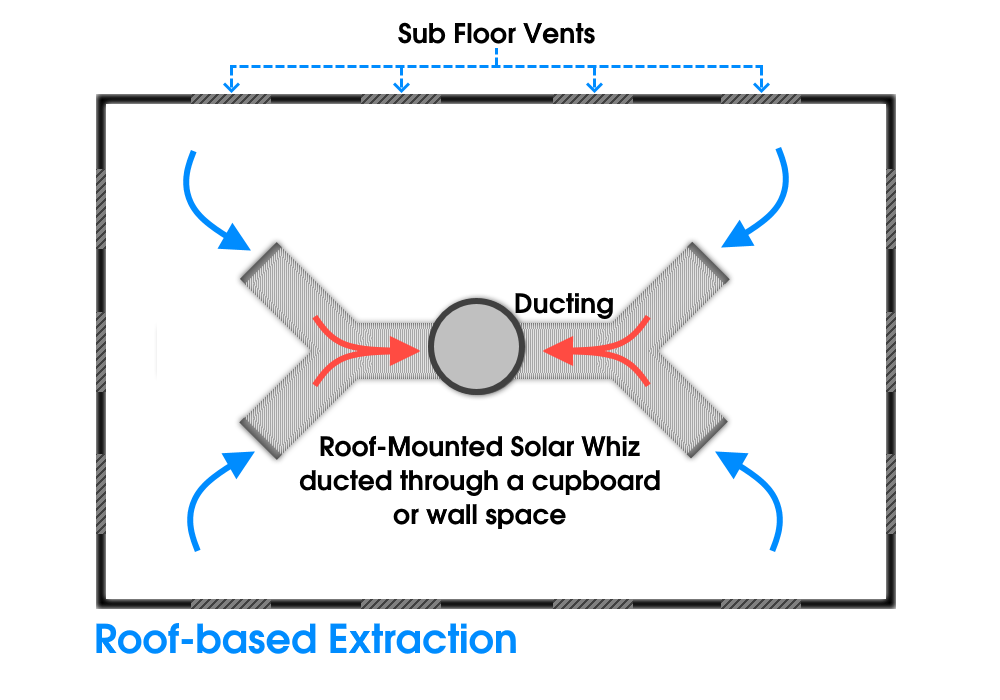
Whilst it may be unconventional, using a Solar Whiz unit for sub floor ventilation is incredibly powerful. By mounting your extraction fan on the roof, and then connecting it to your sub floor via concealed ducting, you guarantee airflow of up to 2,100m3/h.
Single Duct Extraction
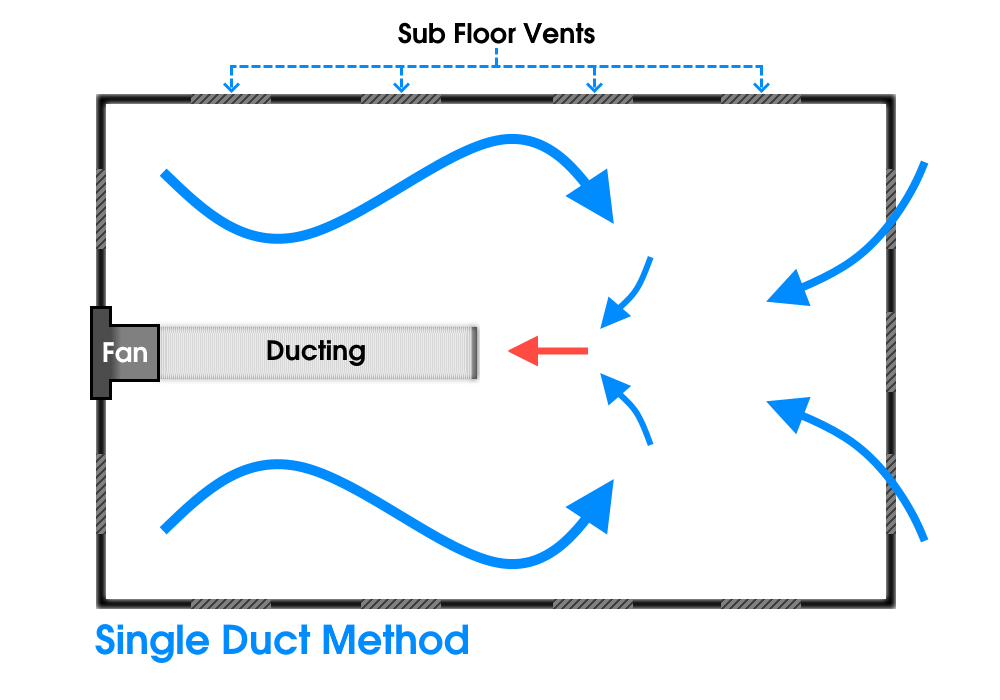
Sometimes simple is the most effective. By placing a single duct near the centre of your home’s sub floor, you guaranteed a large volume of airflow without spreading intakes across your entire sub floor area.
4) A Solution Half-Solved is a Returning Customer
When you set out to solve a sub floor ventilation issue, you shouldn’t need to go back to the same installer to re-address an issue, only to pay for more fans or more ducting.
Solar Whiz attempts to rectify your sub floor ventilation issues by getting to the heart of the problem, so you don’t need to keep coming back for a bigger, better fan. Naturally, sub floor ventilation is a very specific job—so nobody can guarantee they’ll get it right the first time. But there’s no point in coming back every month to address a continued problem.
Solar Whiz will tell you exactly what the problem is, and how best to address it. Prevention is key to ensure that moisture doesn’t damage your stumps or floorboards.
Interested in getting a home inspection? Contact us today.
You might also like:




